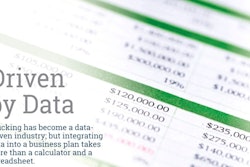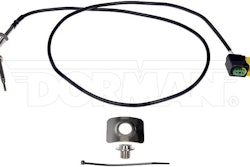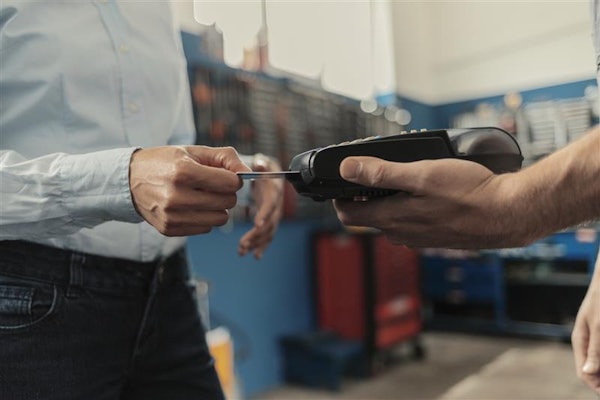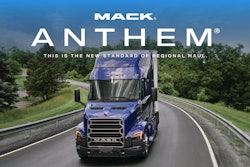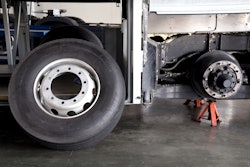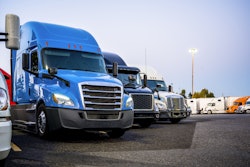As blockchain gains acceptance in logistics and supply chain management, its likely implementation in trucking grows.

It’s OK if the answer is no. Most aren’t. At least not yet. Blockchain is a groundbreaking technology that could one day revolutionize global supply chain management. It’s a data recording and dissemination platform unlike anything business and the trucking industry have ever seen.
But it’s also new and, as such, remains a relative unknown among most business professionals and small business owners.
Yet as blockchain — not “the blockchain,” like “the Facebook” of yore — gains interest, acceptance and adoption in the global logistics community, it is becoming increasingly clear the technology is coming to trucking. When and how the solution will permeate the industry remains to be seen, but for dealers and wholesale distributors eager to remain on the cutting edge, now is as good a time as ever for a crash course in blockchain.
What is blockchain?
“I like to say blockchain is a team sport,” says Patrick Duffy, director, engagement, Blockchain in Transport Alliance (BiTA). Founded in 2017, the BiTA is a consortium of businesses throughout global logistics and transportation that are work-ing in partnership to develop consistent standards for how blockchain can be best leveraged in global transportation.
Most blockchain experts believe the technology has the potential to become the ultimate in data proliferation. Those beliefs are rooted in the simplicity and scalability of the tool.
Though blockchain remains an unknown to most, experts say it is rooted in a concept that is surprisingly straightforward. Block-geeks, a blockchain training and advocacy firm, describes a blockchain “as a growing list of records linked together.” Duffy calls it a “decentralized universal ledger that creates consensus around data.”
Understanding blockchain starts with the blocks.
A block is a single unit of digital information regarding a transaction written using cryptography. Blocks may include boundless amounts of data but are generally populated with purchase order (PO), invoice or order status information. Each new block also displays its own unique identification (ID) number and the distinctive ID of the preceding block to indicate exactly where it falls in the chain.
Where blockchain first differs from conventional purchasing and ordering is how often that information is collected, updated and disseminated. While a typical purchase of brake components by a distributor from a supplier may create just a single PO, blockchain enables every aspect of that transaction — from receiving of the order by the seller to delivery to the purchaser — to be recorded and distributed to all parties as blocks.
Blockchain experts say there’s no limit to the number of blocks that can be created during a transaction. The aforementioned brake parts purchase may require only a dozen blocks, while the purchase and delivery of a shipment of retail goods from Asia to a North American retailer could be thousands of blocks.
And blockchain isn’t about just recording a transaction between two parties. Blockchain can link a supplier to all of its distributors or a retail business with its entire vendor and logistics base. It’s designed for mass use, says Rajat Rajbhandari, Ph.D., CEO and co-founder, dexFreight.
Widespread usage also is crucial to the security of blockchain. Rajbhandari says all blocks submitted to a chain must be verified by the majority of the computers on the chain before appearing on the ledger. Additionally, once a block is approved, its individual ID instantaneously becomes visible on the ledger of every computer in the chain.
The idea is the greater number of users, the stronger the security, says Jacob Prinsen, business analyst and program-mer, MacKay & Company. “Blockchain’s major benefit is that it is transparent and secure. It creates one version of truth,” he says.
“[Blockchain] allows multiple parties to collaborate without having to use third-party validators because the blockchain itself provides the validation,” adds Rajbhandari. “No one can ever go in and change anything.”
How blockchain fits in trucking?
Though initially created for digital currency known as cryptocurrency, blockchain is experiencing rapid adoption as the transactional record of choice for global shippers and logistics operations.
Duffy says UPS, FedEx and DHL representatives participated in an industry panel discussion together for the first time ever thanks to blockchain, while retail giant Walmart is investing heavily in blockchain infrastructure.
This is where operations like BiTA, dexFreight and Serve hope to flourish, says Serve CEO Shahan Ohanessian.
“We want to create an empowering platform that helps everyone in the logistics space,” he says. “The goal is open and complete transparency.”
Experts reference Walmart’s 2018 decision to integrate blockchain into its produce purchasing. After being impacted by an E. coli outbreak in 2017 caused by contaminated lettuce, Walmart partnered with IBM to introduce a blockchain platform that it claimed would reduce the time it took the company to track its food origins from approximately seven days to 2.2 seconds.
“We felt the one-step-up and one-step-back model of food traceability was outdated for the 21st century,” said Walmart Vice President of Food Safety Frank Yiannas at the time. “This is a smart, technology-supported move that will greatly benefit our customers and transform the food system, benefitting all stakeholders.”
Rajbhandari says those same advantages could be used in other industries, including aftermarket parts distribution. By bringing their entire sup-plier chain into a single environment, aftermarket parts suppliers could create blockchains that would enable them to immediately pinpoint all supply chain breakdowns, such as damaged components, late shipments or product availability issues.
“The material traceability factor is significant,” he says.
Blockchain’s advantages as a transactional medium also shouldn’t be overlooked. Implementing blockchain requires an operational investment but the technology carries no transactional cost. And while blockchain was created to support cryptocurrency, it also can facilitate standard currency transactions. Ohanessian says this functionality plus the blockchain’s ubiquitous transparency also makes it an ideal resource for rideshare operations and food delivery, both of which suffer from inflated prices due to platform fees (Uber, Lyft, Grubhub, DoorDash, etc.).
“If a pizza costs $10 and the cost to deliver it to you is $4, you should only pay $14,” he says.
What’s next?
Though blockchain recognition is growing rapidly, the technology still has a way to go to become a standard operating procedure in trucking’s aftermarket parts space. People now know the term but they still don’t know what it means, Prinsen says.
Fortunately, that’s something organizations like Blockgeeks and other industry experts are working to resolve. Duffy says BiTA has made tremendous strides in each transportation segment by focusing on how blockchain specifically fits in each industry.
“We try to take this nebulas idea [of blockchain] and distill it down to show people how to integrate it into their operations,” he says.
Education is just the first step, Duffy adds. Once blockchain is adopted there’s still a learning curve where associated businesses determine the best way to use it. He mentions the data protocols and standards BiTA is working on to build as a step in that direction. Blockchain works best when everyone uses it the same way.
“Blockchain is not a turnkey solution, at least not at the moment,” Duffy says.
Finally, there’s the matter of cost. Blockchain’s absence of transactional expenses doesn’t make it a free service. Companies interested in doing business using blockchain must invest in the advanced computer technology necessary to make it work. Like most new technology, these implementation costs will fall as adoption rates rise, but at this point they remain a noteworthy consideration.
That said, many blockchain experts believe these barriers to entry will be removed in the near future. Blockchain offers too many benefits for too many verticals to not be adopted on a major scale. Ohanessian refers to blockchain as a baby industry, finally getting its feet under itself after a period of crawling.
“We’re just barely starting to walk,” he says. “But once consumers start to see the advantages, adoption will be much higher.”
That’s the thing with toddlers; once walking is mastered running isn’t far behind.
Ohanessian adds, “I think by 2030 we’ll start seeing [blockchain] in a lot of mainstream markets … and 30 years from now we’ll see it in every industry.”


